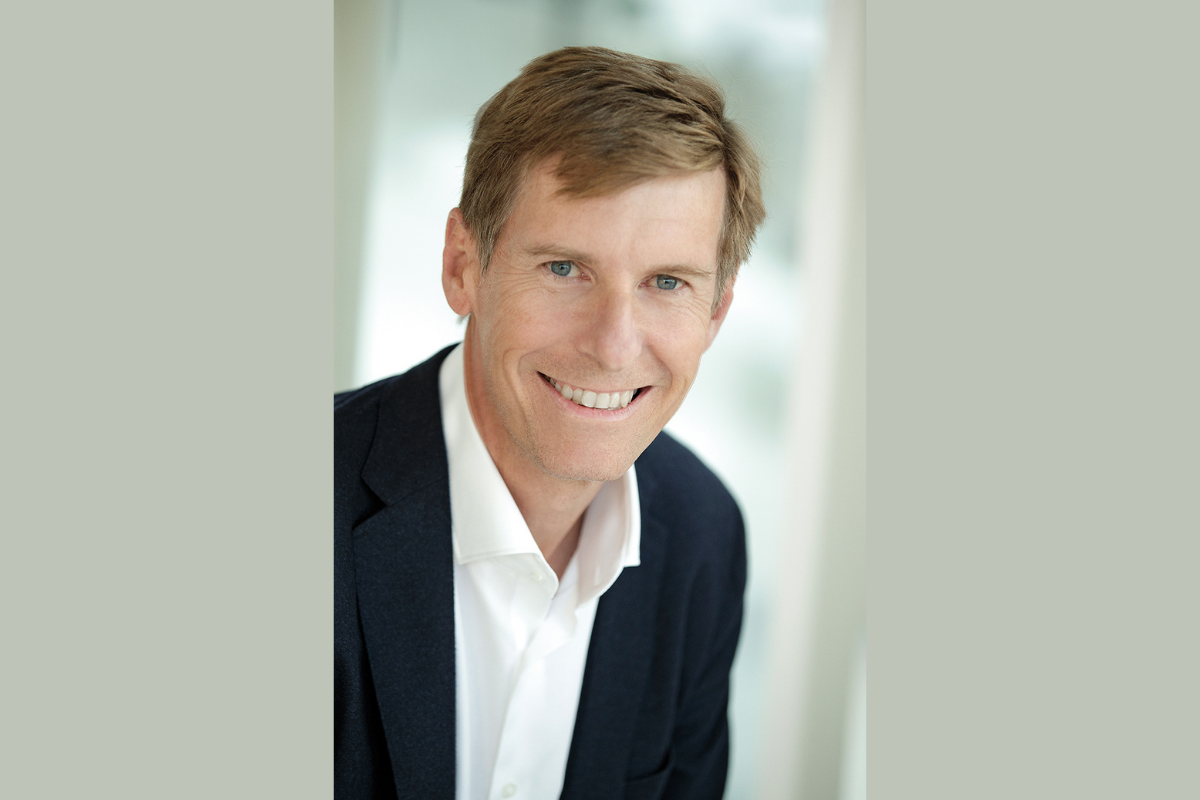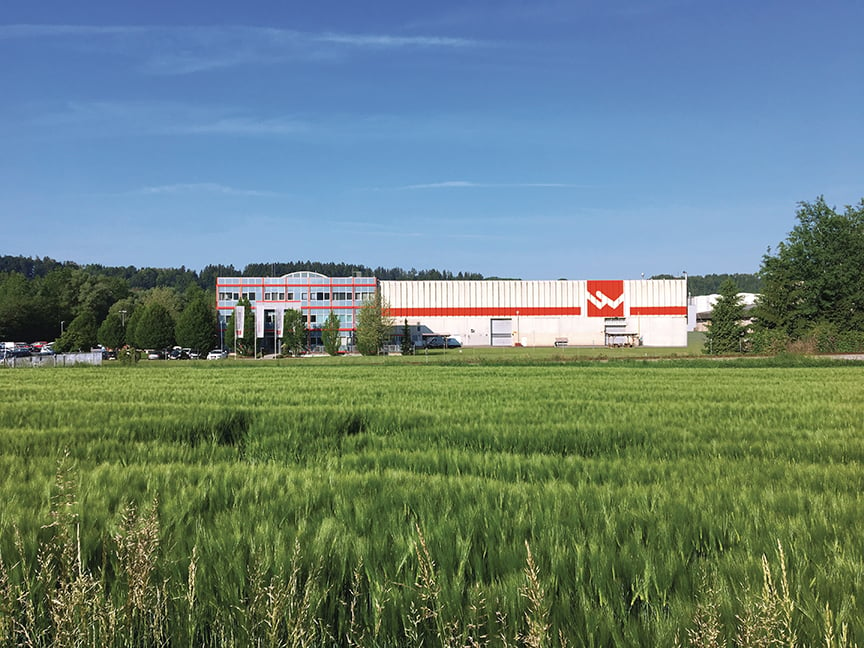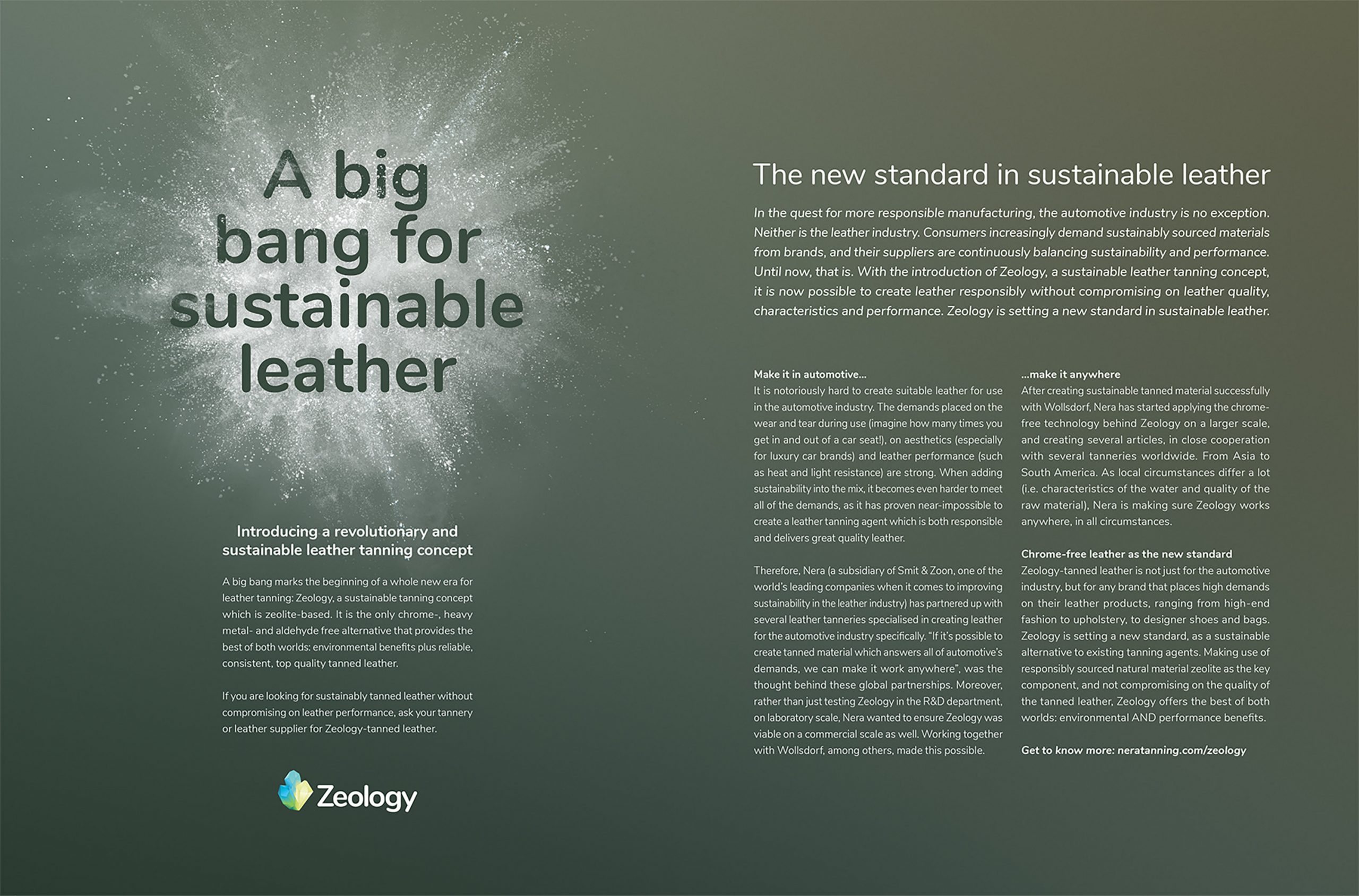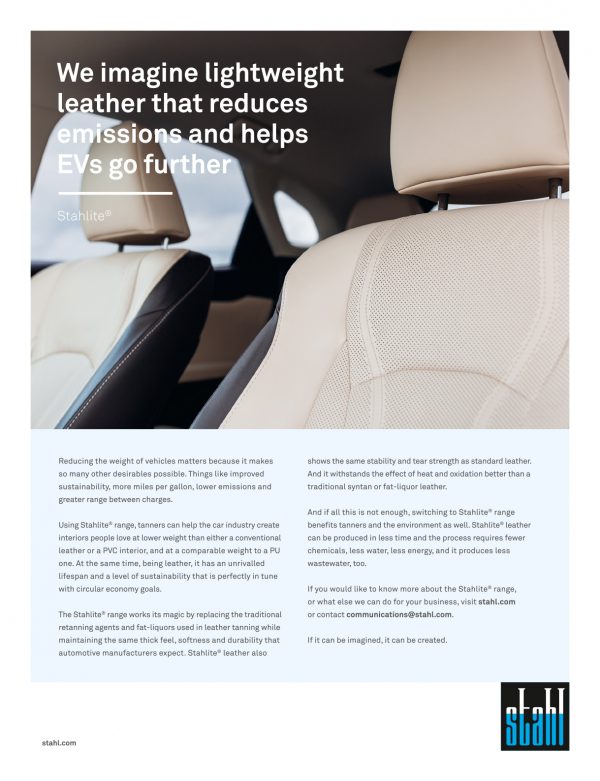We all need to start looking at leather in a different light, according to Andreas Kindermann. “When we talk about leather, people always say that it’s a nice but old-fashioned material, and production is not sustainable,” the CEO of leather group Wollsdorf Leather (Wollsdorf ) says from company headquarters in Wollsdorf, a village close to the Austrian city of Graz.

“In fact, the opposite is actually true.” Leather, as Andreas explains, is a material based on a converted by-product – animal hide – of the meat industry.
“We couldn’t afford to pay for a whole animal that is raised by a farmer just for its hide. Instead, a farmer sells the animal for its meat or milk and then there’s the possibility to recycle the hide. If you don’t do this, you have to throw it away and that’s pure waste.”
That makes leather fit quite nicely into the current trend for upcycling, he adds. The executive is on a quest to change the consumer image of this very traditional material. “Leather is an innovative product and is not just a core material, but it can also include functions,” Andreas says.
“For example, we integrate sensors into our leather and have heating concepts built into the surface, as well as antibacterial surfaces, antiviral surfaces and anti-soiling surfaces.”
This is especially pertinent in one of Wollsdorf’s core markets – the automotive industry. In electric cars, this new wave of intelligent leather can be seen in the heating systems that save on battery power and, therefore, contribute to increasing the overall efficiency of the vehicle.
“Sensors in the leather are also an essential component in self-driving cars to make sure that the vehicle knows and understands when the driver is ready to take over the steering,” Andreas explains.
“These smart solutions that are integrated into leather mean that the product doesn’t only look and feel nice, but it’s also functional, making it a product for this century.”
It’s a forward-thinking perspective that keeps this family-owned company one step ahead in its core market segment: automotive steering wheels, car seats, instrument panels, airbag covers, door trim, brake levers and gear selectors.
Every minute, 14 cars fitted out with leather supplied by Wollsdorf are sold around the globe. Clients include Volkswagen, Audi, BMW, Jaguar, Land Rover, Mercedes-Benz and Ford, just to name a few.
The Wollsdorf leather stamp can also be found in passenger jets and trains, private yachts and luxury interior projects. Today, more than ever, Wollsdorf’s selling point is quality and innovation.
“Austria isn’t a low-cost home base,” Andreas explains. “Instead, this is offset against high innovation and high quality. Customers know that when they source from us, they receive a material that exceeds expectations and helps solve their problems. It’s not only about providing clients with nice leather, but also about offering solutions. One of our advantages is that we try to understand the needs of our customers.”
Andreas joined the company in 2008 after spending nearly 15 years as Vice President Finance at Magna Interiors, a leading supplier of automotive parts. At Wollsdorf, he has taken a “deep dive into leather”, as he phrases it.
But beyond the opportunity to specialise in one aspect of the industry, he was attracted by the opportunity to broaden the scope of what was a very Eurocentric business.
It’s a forward-thinking perspective that keeps this family-owned company one step ahead in its core market segment: automotive steering wheels, car seats, instrument panels, airbag covers, door trim, brake levers and gear selectors.
Authenticity Matters
Since 2018, Andreas has been President of COTANCE (Confederation of National Associations of Tanners and Dressers of the European Community), the representative body of the European leather industry. Along with improving the image of leather, his objective is to achieve legal protection of the term leather. “For Europe’s leather industry, with its high-quality products, it is very important to have harmonised Europeanwide regulations with clear and common rules for the designation of leather. For consumers, it should be possible to identify leather as such and it is important to protect them from counterfeit leather products,” Andreas commented upon his appointment to the role.
Every minute, 14 cars fitted out with leather supplied by Wollsdorf are sold around the globe. Clients include Volkswagen, Audi, BMW, Jaguar, Land Rover, Mercedes-Benz and Ford, just to name a few.
The Wollsdorf leather stamp can also be found in passenger jets and trains, private yachts and luxury interior projects. Today, more than ever, Wollsdorf’s selling point is quality and innovation.
“Austria isn’t a low-cost home base,” Andreas explains. “Instead, this is offset against high innovation and high quality. Customers know that when they source from us, they receive a material that exceeds expectations and helps solve their problems. It’s not only about providing clients with nice leather, but also about offering solutions. One of our advantages is that we try to understand the needs of our customers.”
These smart solutions that are integrated into leather mean that the product doesn’t only look and feel nice, but it’s also functional, making it a product for this century.
Andreas joined the company in 2008 after spending nearly 15 years as Vice President Finance at Magna Interiors, a leading supplier of automotive parts. At Wollsdorf, he has taken a “deep dive into leather”, as he phrases it.
But beyond the opportunity to specialise in one aspect of the industry, he was attracted by the opportunity to broaden the scope of what was a very Eurocentric business. “One of the main goals was to change the approach to customers and also grow a worldwide production footprint because the automotive industry is no longer European, it’s global,” he says.
Wollsdorf: key moments
1936: Wollsdorf Leather founded.
1970: Production of furniture leather starts.
1990: Production of automotive leather starts.
1995: Production of steering wheel and aviation leather starts.
2002: Launch of innovative process to produce seamless leather for airbag covers.
2009: Completes conversion to 100% chrome-free tanning.
2010: Launch of world-leading sewage sludge draining technology for tanneries, and introduction of light leather for the aviation sector.
2013: Conversion to renewable energy (wind and water).
2014: Crowned World Leather magazine’s 2014 Global Tannery of the Year.
2015: Conversion of the first steam to infrared drying facility.
2016: Becomes the first carbon-neutral tannery in Austria.
Expansion into Asia and North America were two of Andreas’s first tasks in the role. Before celebrating his 10-year work anniversary, new manufacturing facilities had been opened in Croatia, China and Mexico, in addition to its Austrian base.
Today, the raw hides are processed in Wollsdorf. From there, they are sent for stamping and stitching at its other plants around the world. “We produce leather for approximately six to seven million cars per year,” he shares – an impressive figure, which equates to nearly 8% of all cars globally.
“We do believe that there is room for growth, especially in Asia and North America.” This global overview has also been applied to the company’s sales operations.
“We want to understand the needs of our customers and communicate with them on a regional level,” Andreas says. A centralised sales team has given way to sales offices spread out around the world: in the US, China, Hong Kong and Uruguay. This scope, both on sales and production, plays to the company’s advantage.

“We are able to talk directly and quickly react to our customer’s needs, which is very important.” Sustainability was another early consideration, especially considering the importance of water in the tanning process. Within his first two years at Wollsdorf, its water treatment plant in Austria became best in class. But Andreas appreciates that it’s not enough to simply treat wastewater. “The main priority is to make sure we are avoiding waste,” he explains.
Water consumption has dropped to around 40% below the European Union benchmark and since 2013, the company has lowered its CO2 emissions by switching to wind and water energy solutions.
“As a second step, whatever we do, we make the best out of it. For instance, we now take the fat from the hide that is generated during the production process to produce a biodiesel,” Andreas adds.
In 2016, Wollsdorf became the first carbon-neutral tanner in the world, although he emphasises that this eco-friendly footprint is applied globally across all the company’s facilities. It’s an impressive achievement in an industry known for its complex manufacturing operations.
“There are about 50–60 steps required to produce leather, which can take up to five weeks,” Andreas reveals. The process is challenging, especially since there are no quality specifications for the hides that are received, but it’s one that Andreas is determined to make as lean as possible.
“We have already reduced the production time to three weeks, making sure that any quality deviations are identified as soon as possible,” he says. A current area of focus is this transition from what Andreas describes as manufacturing with high craftsmanship to a more industrialised production, which considers lean systems such as Kanban or total productive maintenance.
There are about 50–60 steps required to produce leather, which can take up to five weeks.
“These are technologies that are already implemented in other industries but have yet to arrive in ours.” Another layer of complexity in the business is the inconsistent nature of supplier relationships; in particular, the raw hides Wollsdorf uses to make leather (the company sticks to specific breeds of cattle).
“In this business, the person who pays the most receives the hides,” Andreas explains, adding that it is usual to negotiate with partners on a daily basis and that contracts, if they exist, are generally short-term in nature.
“In Europe, traders agree on contracts for the next four weeks, while in the US, you may have a contract for the next three months. Every month, we have to negotiate with our hide traders for the quantities they can provide, and this can change on a weekly basis.”
Andreas says that navigating the surprises this arrangement can throw up is a big challenge. “None of the dealers commit to any quality of the hide they deliver,” he says.
“We have to constantly monitor the actual quality as to what kind of natural defects there are, and constantly assess the different prices of the suppliers versus the actual quality of the product that they are providing. It’s all part and parcel of the agricultural business. It’s very price-focused.”
But Andreas and his team do ensure open lines of communication with their supplier base. “We set up regular meetings with them to discuss the quality of the material they provide, to give feedback when it is good or bad,” he says. The company has even been known to go one step further and visit the slaughterhouses themselves.
“We try to audit what they are doing and how, and determine whether any changes need to be done, which is quite difficult,” he points out. There may be important behind-the-scenes obstacles to overcome, but Andreas says that never prevents Wollsdorf from delivering what it promises.
“We have always been able to provide our customers with the high-quality material they have purchased, on time, every time.”
Proudly supported by:




